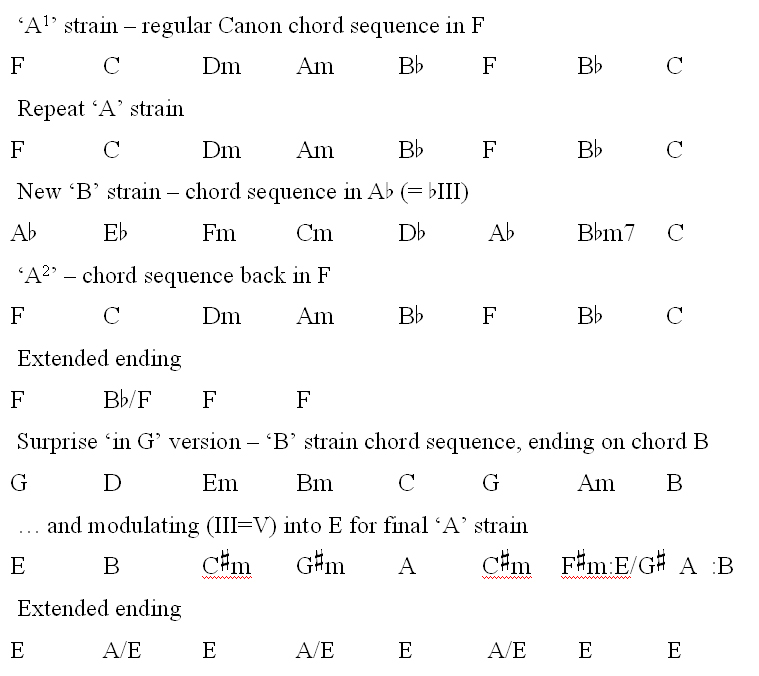The Musicarta Canon Project
Canon Diaries 01-09-13
Canon Diaries 01-09-13 is a no-holds-barred suspensions-and-modulation showcase to round off the Canon Diaries Supplement of the revised Musicarta Canon Project.
Detailed learning notes are not given, but if you apply all the tips and techniques detailed in the previous Diary entry learning notes, you are bound to get something sweet into your repertoire!
Here's the new Mister Musicarta YouTube video.
Canon Diaries 01-09-13 chord sequence
Here is the CD 01-09-13 chord sequence. Notice that we are starting in the key of F.

Accented non-chord tones (suspensions)
More than half the melody notes in CD 01-09-13 are non-chord tones (suspensions). Because there are so many of them, the suspensions are not marked in the chord symbols.
'Suspensions' usually suggests a chord tone which is pulled up (raised) from its normal position, then 'resolved' (let back down). Most of the 'accented non-chord tones' in CD 01-09-13 are lowered chord tones which are then allowed to pop back up.
The following video shows a practice-speed performance on the top keyboard, and underneath, the right hand 'skeleton chords’ before any syncopation is applied.
In the skeleton chords, non-moving chord tones are coded green, and the orange tone is the melody note. (Usually, green is the bass/left hand part.)
The melody note is usually at the top of the chord, but as the melody gets lower, it is more likely to be the middle or even the bottom note of the chord. (Triads start getting a little ’muddy’ below middle C.)
Syncopation
There is an elaborate bouncing bass (bounces between lower and upper notes of an octave), but it is unlikely that you would play exactly the composer’s bass part, which is pretty spontaneous (CD 01-09-13 is a transcribed performance) and is dictated by the syncopation of the right hand part, anyway - which you are also unlikely to play exactly 'as written'.
Try cribbing the piece from just the video. Copy the right hand skeleton chord-and-moving note part and supply an octave root (or slash chord bass). Then, just let it get funky!
Getting just one syncopated segment down
per session in this way, however simplified it might be, should be celebrated
as an acceptable achievement. “It all adds up!” One pattern per week – equals a
whole style of playing in just a year!
Modulation and transposing
Canon Diaries 01-09-13 presents the basic Canon chord sequence in no less than four keys: F, A flat, G and E (first, third, sixth and seventh lines of the chord sequence). The surprise re-start in G (line six) is very noticeable, but hardly anyone will spot the final modulation into E.
The modulations make for exciting listening. You would not play a Canon-based chord sequence of this length without modulating ‘to sweeten the pill’. It also gives you, the player, invaluable experience, and builds real ‘in-any-key’ understanding of harmony.
Thanks for learning with Musicarta! Come again soon!
|
OUT NOW! |
THE MUSICARTA BEAT & RHYTHM WORKBOOK At last! An effective approach to keyboard rhythm & syncopation skills. Learn more! |
ONLY $24.95! |
THE MUSICARTA
|
THE MUSICARTA
|





 THE LOGO
THE LOGO
